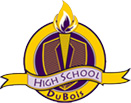How can school personnel identify and select evidence-based practices or programs?
Page 2: Identify School Resources
Once they have identified their schools’ needs, school personnel should take stock of their available resources. Doing so will help them to select a practice or program to address the needs in question. The table below highlights some available resources schools may want to consider.
|
Available Resources |
|
| Type of Resource | Examples |
Personnel |
|
Materials |
|
Funding |
|
ARRA Funding
This short-term funding provided through the American Recovery and Reinvestment Act of 2009—which may be distributed through various funding streams (e.g., IDEA [Part B], Title I, Part A)—can be invested in a number of ways, including efforts to:

- Increase teacher effectiveness
- Adopt rigorous college and career-ready standards
- Establish data systems and use data for improvement
- Turn around the lowest performing schools
- Support students with disabilities in the context of schoolwide reforms
- Ensure that strategies are data-driven and evidence-based
- Increase the capacity and productivity of schools
(From the American Recovery and Reinvestment Act of 2009: Using ARRA Funds Provided Through Part B of the Individuals with Disabilities Education Act [IDEA] to Drive School Reform and Improvement, https://www2.ed.gov/policy/gen/leg/recovery/guidance/idea-b-reform.pdf)
(Close this panel)
Professional development funding
In addition to funding provided through local and state education agencies, provisions for professional development are often embedded in grant programs. Three such sources of funding are:
Title I, Part A, funds
Title I, Part A, funds may be used by Title I schools to support certain types of professional development activities. Among the ways that these funds may be used to support professional development is to:
- Provide professional development to Title I teachers regarding how to prepare low-achieving students to participate successfully in advanced coursework
- Support job-embedded professional development in Title I schools
- Pay a stipend to teachers in a Title I school to participate in professional development
- Pay for substitute teachers in order to release teachers in a Title I school to participate in professional development
- Pay for professional development activities for all instructional staff
- Create a two-year program of professional development to increase principal effectiveness in improving achievement in the lowest-achieving Title I schools
- Provide professional development designed to build the capacity of school personnel, including principals, teachers, volunteers, and other pupil support staff to work effectively with parents
The American Recovery and Reinvestment Act of 2009 (ARRA): Using Title I, Part A ARRA Funds for Grants to Local Educational Agencies to Strengthen Education, Drive Reform, and Improve Results for Students (https://oese.ed.gov/files/2020/07/titlei-reform.pdf).
IDEA (Part B)
In general, IDEA (Part B) funds must be used to pay the excess costs of providing a free appropriate public education (FAPE) to children with disabilities, such as those for special education teachers and administrators, related services providers (e.g., speech therapists, psychologists), materials and supplies for use with children with disabilities, professional development for special education personnel, and professional development for general education teachers who teach children with disabilities. Among other uses, schools are allowed to utilize these funds to provide professional development related to:
- Universal design for learning (UDL) approaches and strategies for supporting emergent literacy, reading and math instruction, learners with disabilities in K–12, and the use of new technologies with evidence-based strategies for improved outcomes
- Implementation of embedded assessments intended to inform the development of improved teaching and learning strategies
- Implementation of appropriate accommodations for children with disabilities on large-scale assessments
- Acquisition and use of specialized formats to support students with disabilities within the least-restrictive environment
- Effective use of progress monitoring and formative assessment measurement instruments
- Effective implementation of evidence-based instructional and positive behavior practices
- Implementation of effective instruction across the content areas for students with disabilities who are struggling readers
- Providing the specific positive behavioral interventions and supports that are included in the IEPs of children with disabilities including the professional development of personnel (both special education and regular education) involved in providing those interventions
- Providing technical assistance and professional development to enhance the knowledge and skills of special educators regarding transition strategies, including how to effectively use transition-curriculum and career assessment, exploration, and development tools
- Promoting the effective use of technology to improve instruction for students with disabilities by providing professional development and technical assistance and developing teacher mentor programs and communities of practice
American Recovery and Reinvestment Act of 2009: Using ARRA Funds Provided Through Part B of the Individuals with Disabilities Education Act (IDEA) to Drive School Reform and Improvement (http://www.ed.gov/policy/gen/leg/recovery/guidance/idea-b-reform.pdf) (Click here for PDF.)
Enhancing Education Through Technology Recovery Plan
The Enhancing Education Through Technology Recovery Plan is a formula grant program—that is, a noncompetitive award based on a predetermined formula—sometimes referred to as a state-administered program. The program provides grants to state education agencies (SEAs) on a formula basis to:
- Improve student academic achievement through the use of technology in schools
- Assist all students in becoming technologically literate by the end of eighth grade
- Encourage the effective integration of technology with teacher training and curriculum development in order to identify successful research-based instructional methods
The primary goal of this program is to improve student achievement through the use of technology in elementary and secondary schools. Additional goals include helping all students become technologically literate by the end of the eighth grade and, through the integration of technology into both teacher training and curriculum development, establishing research-based instructional methods that can be widely implemented.
Each local education agency (LEA) and eligible entity that receives funds under this program must use at least 25 percent of its funds to provide professional development. (This requirement applies to both formula and competitive grant funds.) The recipient must provide professional development in the integration of advanced technologies, including emerging technologies, into curricula and instruction, and in using those technologies to create new learning environments. The remaining grant funds must be used to carry out other activities consistent with the purposes of the program and the district’s local technology plan. To learn more about the Enhancing Education Through Technology Recovery Plan, visit http://www2.ed.gov/programs/edtech/index.html
(Close this panel)
Time |
|
Facilities |
|
Equipment |
|
Technical assistance |
|
Training |
|

|

|

|
Identify School Resources
![]() Paige Elementary School
Paige Elementary School
The results of the needs assessment in hand, Paige Elementary’s teachers will phase in the RTI approach beginning with the implementation of progress monitoring (PM). When the district provides a list of what is needed to implement RTI, the principal and the rest of the team examine the school’s existing resources. They make a list of the available resources that will be useful for implementing progress monitoring and also take note of what resources they will need to obtain.
Resources |
Available |
Needed |
| Funding | Additional Title I funding for the implementation of evidence-based strategies | |
| Personnel | Title I teacher—experience in PM; will assist teachers with collection and use of PM data | Substitute teachers to cover classrooms while teachers attend training |
| Materials | Commercially available PM system—probes for each grade level, data analysis software, procedural guidelines | |
| Time | Time for training on PMTime for administering PM probes (assess each student once per week) | |
| Facilities | N/A | |
| Equipment | Computers to run data analysis software | Stopwatches |
| Technical Assistance | District personnel who can provide in-school guidance on the administration of probes | Ongoing technical support regarding software and data-related issues* |
| Training | Teachers attended district-wide summer training on how to administer and score PM probes and how to use the data to guide instruction | Training on how to run the data analysis software for Title I teacher plus one teacher at each grade level*Ongoing peer coaching for the implementation of progress monitoring |
*Note: Technical support provided by most companies that sell PM systems
(Close this panel)
Identify School Resources
![]() Grafton Middle School
Grafton Middle School
The needs assessment conducted at Grafton Middle School indicated that reading was the area most in need of improvement. The school improvement team identifies the existing resources as well as those that may be needed to address the students’ reading skills. As they begin to assess the materials that the teachers are currently using and those that are available at the school, they recognize that the school purchased an evidence-based reading program for the fifth- and sixth-grade students just two years ago. Through conversations, they discover that the teachers believed the program to be ineffective and that students did not make the anticipated gains. However, the team also learns that the program in question has a strong research base and that it matches the characteristics of the student population at Grafton Middle. The school implementation team discovers that many of the teachers had not implemented the reading program as the developer intended (e.g., omitting some components, not using scripts). Many also felt that they had not received adequate training on how to implement the program. Although the team believes that the teachers should continue using the program, they acknowledge that they need to provide better training on implementing it. They likewise need to identify and address other reasons for the program’s ineffectiveness.
With this information in mind, the team evaluates the resources that are available as well as those that will most likely be needed to implement the reading program effectively.
| Resources | Required | Available | Need | Notes |
| Personnel | Classroom teachers; support staff, coaches | ✔ | ||
| Funding | Minimal funding because materials have been purchased | ✔ | Small amount of funding available to be spent in any manner | |
| Time | Time for training | ✔ | Teachers’ schedules can be changed to accommodate needed activities | |
| Facilities | Classrooms | ✔ | ||
| Equipment | N/A | Two computers per classroom and 20 computers in lab; a variety of equipment is available to be checked out by individual teachers | ||
| Technical Assistance | Provided by publisher if needed | |||
| Training | Training on effective implementation; Ongoing support/ coaching | ✔ | Funding can be used to provide training |
(Close this panel)
Identify School Resources
![]() DuBois High School
DuBois High School
The results of the needs assessment conducted by the DuBois High School staff indicate that the areas of discipline and safety need improvement. The school improvement team attempts to identify existing resources that are available to address students’ behavior. They think the most valuable of these are personnel, time, training, and funding (for training and substitute teachers to cover for staff who are at training events). However, until they select a behavior practice or program, they are unsure what other resources (e.g., materials, facilities, equipment, and technical assistance) will be required. As they brainstorm, they create the following notes:
School Resources for Addressing Behavior Management
- Personnel
- teachers
- administrators
- other school staff (e.g., cafeteria staff)
- Funding
- additional funding that has come from the local education agency through IDEA Part B
- Time
- can make adjustments as needed for training, meetings, etc.
- Training
- (funding is available)
- will need ongoing support such as coaching or mentoring
(Close this panel)